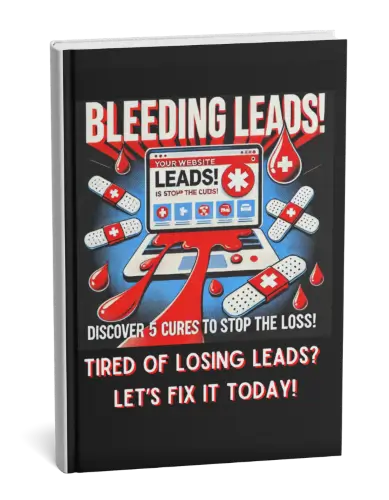
It is no surprise that most businesses now have a website. However, having a website does not guarantee success. You have to do some research and take action before your web design can help your business. Google rolls out an update now and then, so you need to keep your web design on track.
Your web design is certainly contributing to the success of your business. But it might not be helping your business as much as you would like. On top of that, your website might also have untapped potential, and it would not hurt if you utilized it to your advantage. Here are some signs your web design might be holding your website back and not helping your business as much as it potentially can:
Traffic is the first metric that contributes to how well your website performs. It refers to the number of users visiting your website, but it is also more than that. Besides visits, traffic is how viewers interact with your other web pages. Their sessions will help you track which areas need improvement.
There are plenty of ways to increase your website’s traffic. Paid advertising, off-page optimization, and social media marketing are just a few. Paid advertising is probably the quickest way to get results, but it could prove costly. Promoting your website or business on various social media platforms like Instagram, Facebook, and TikTok is a great way to reach multiple audiences. Off-page optimization is building relationships with other webmasters to promote each other’s websites.
More people are using their smartphones and handheld devices than ever before. This number will increase as gadgets improve and become convenient for multiple purposes. Therefore, your website needs to be mobile-friendly. Your website’s accessibility when using mobile devices is also called responsive web design.
A website for business should be accessible regardless of the screen size, and this is true for your website as well. Visitors should be able to navigate your website without hiccups like cropped images, unreadable texts, or unclickable buttons. Most importantly, make sure mobile users can navigate your website using only their thumb.
When a visitor leaves your website immediately without visiting your other pages, they do not find your webpage helpful. This behavior is referred to as visitor bounce rate, and a high bounce rate is not favorable for your business. You can fix your website’s bounce rate by helping your viewers find information or guiding them towards a better user experience.
Avoid putting too much content on your page so your users won’t get overwhelmed. Use easy-to-find navigation designs to guide them toward other pages that might interest them. Lastly, use call-to-action buttons to encourage customers to buy your products (or services) or contact you.
Do visitors fill up your forms and provide their emails? If it does not happen too often, then you have a low number of leads. Visitors not filling up contact forms is another indicator that your web design is not performing well. To remedy this, try tracking email signups and submissions to determine what keeps your visitors from filling up your forms.
Catch attention and provide direction for your users through call-to-action buttons or CTAs. Ensure your business email, phone numbers, and contact forms are easily accessible. If possible, put your contact form on every page of your website. Just ensure that it is not too ubiquitous.
Another way to increase leads is to improve the web design of your website. Make sure it is pre-programmed for success and can turn visitors into customers.
People who engage with multiple pages on your website are a good sign, as they are willing to explore and are interested. Make sure you are improving the user experience by regularly updating your website’s content, navigation, and design.
You can improve the content by making sure that even non-experts can follow what your website is conveying. Redesign the navigation and layout of your website regularly to keep the vibe fresh and interesting. Lastly, link the web pages together so that visitors can easily jump from one page to another.
The click-through rate is measured by how much your target audience clicks on your paid online advertising. It can also be measured by how much your paid online ads reach the top of search results. Though it will show up on a user’s view, there is the possibility that they will not click on it. Take note of this behavior and quantify it to know which areas you can improve.
Increase the click-through rate by working on your website’s optimization. Make improvements to the titles of your web pages by using proper keywords and offering value to your potential customers. These techniques also apply to the meta descriptions of your web pages. Lastly, shorten your pages’ URLs so they will look presentable in the ads.
To get the most out of your website, know the signs of how well it is helping your business. You will know when your website is not performing well if the traffic, lead conversion rate, click rate, and the number of pages per visit are low. You also need to look out if the bounce rate of your website is high and if it is accessible across different mobile devices. Doing these website improvements should contribute to the success of your business.






